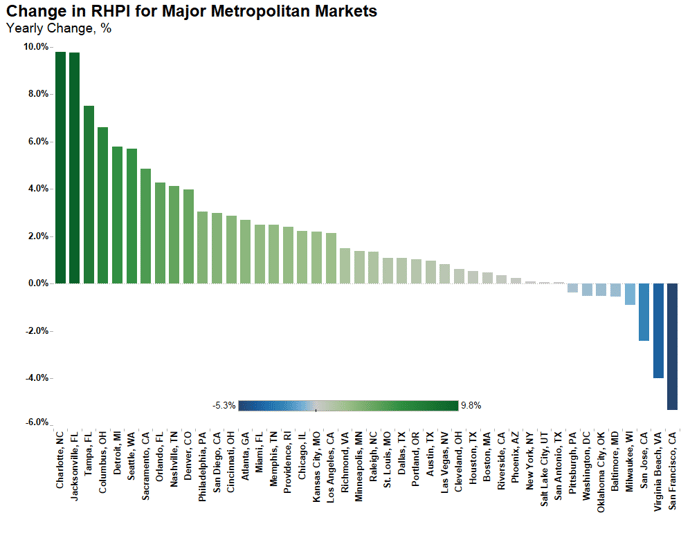First American’s proprietary Real House Price Index (RHPI) looks at October 2016 data and includes analysis from First American Chief Economist Mark Fleming on the impact of rising mortgage rates on consumer house buying power and affordability heading in to 2017.
“While mortgage rates above 4 percent reduce affordability, accelerating wage growth and the expected slowdown in unadjusted price appreciation are both beneficial for affordability.”
“While we have yet to see the impact of the ‘Trump Bump’ and Yellen’s increase in mortgage rates on unadjusted house prices, I expect there to be an impact early next year. In 2013, we saw the significant slowing effect the ‘taper-tantrum’ had on unadjusted house prices. We expect unadjusted prices to respond similarly to the recent increases in mortgage rates, though to a lesser degree this time,” said Fleming. “While mortgage rates above 4 percent reduce affordability, accelerating wage growth and the expected slowdown in unadjusted price appreciation are both beneficial for affordability. I expect the net effect on consumer house-buying power to remain modest.”
The RHPI offers an alternative view of the change over time of house prices at the national, state and metropolitan area level. The traditional perspective on house prices is fixated on the actual prices and the changes in those prices, which overlooks what really matters to potential buyers - their purchasing power, or how much they can afford to buy. The RHPI adjusts prices for purchasing power by considering how income levels and interest rates influence the amount one can borrow.
For Mark’s full analysis on affordability, the top five states and markets with the greatest increases and decreases in real house prices, and more, please visit the Real House Price Index.
The RHPI is updated monthly with new data. Look for the next edition of the RHPI the week of January 23, 2016.




